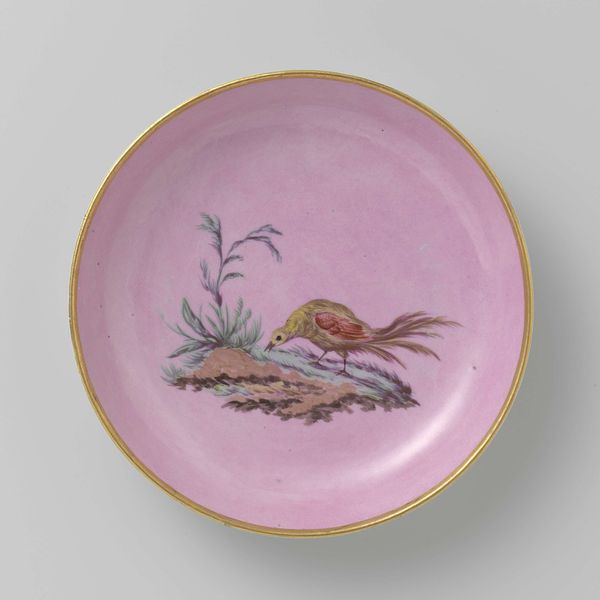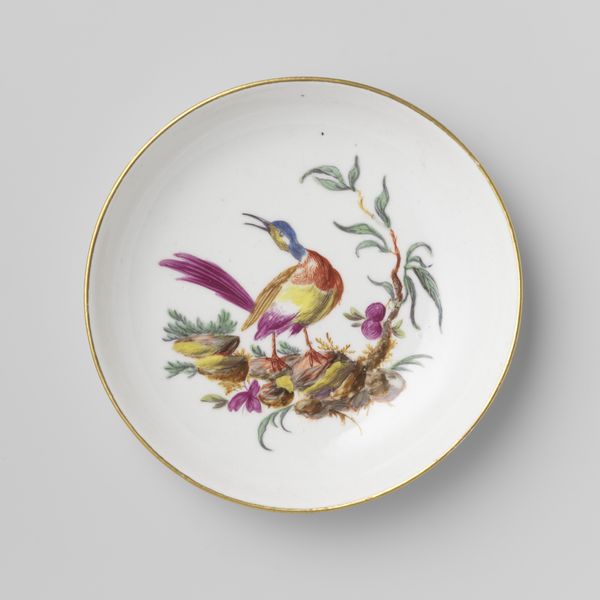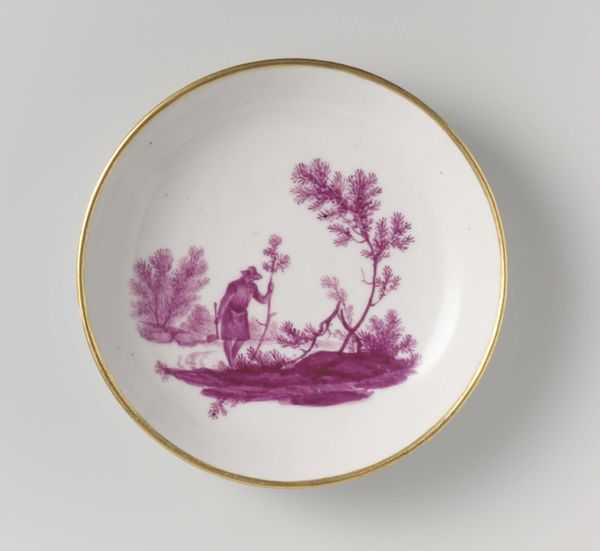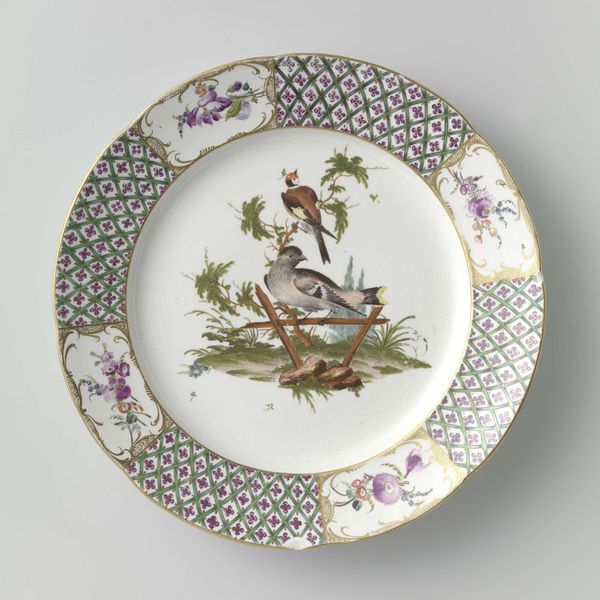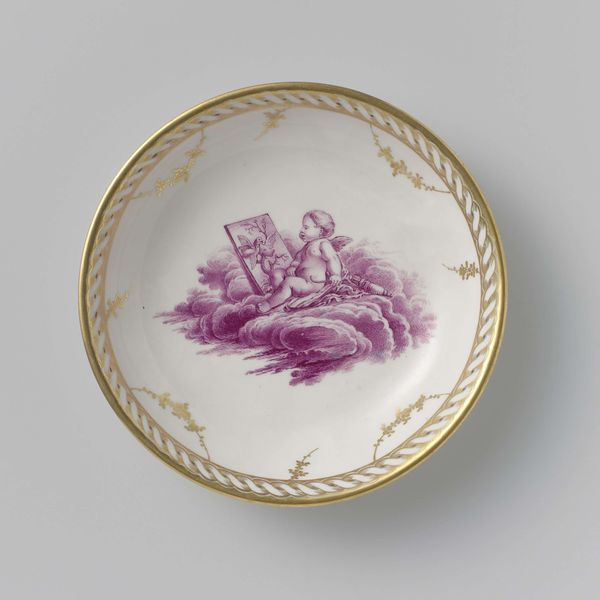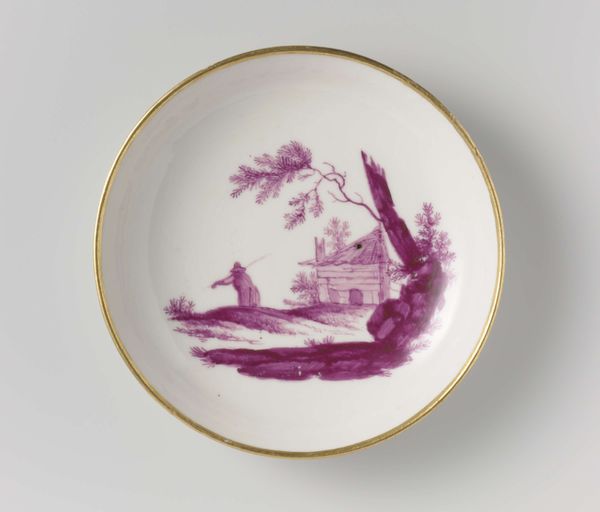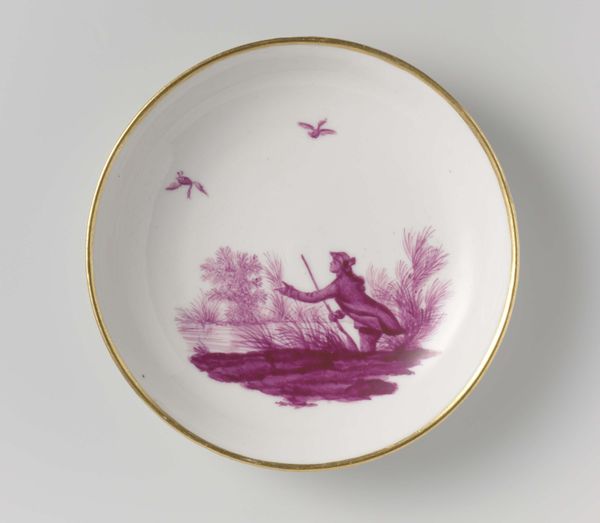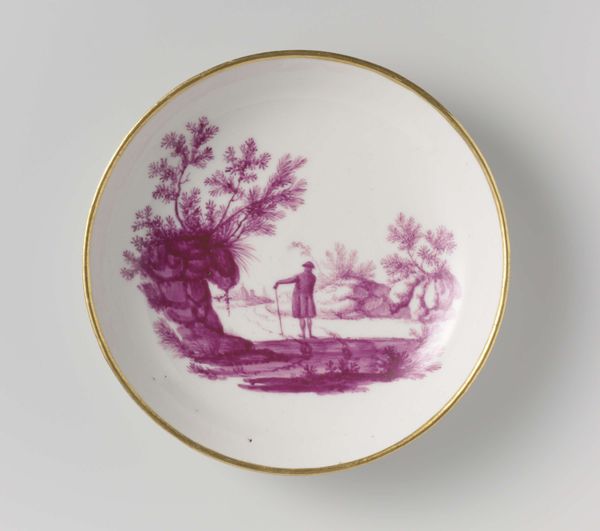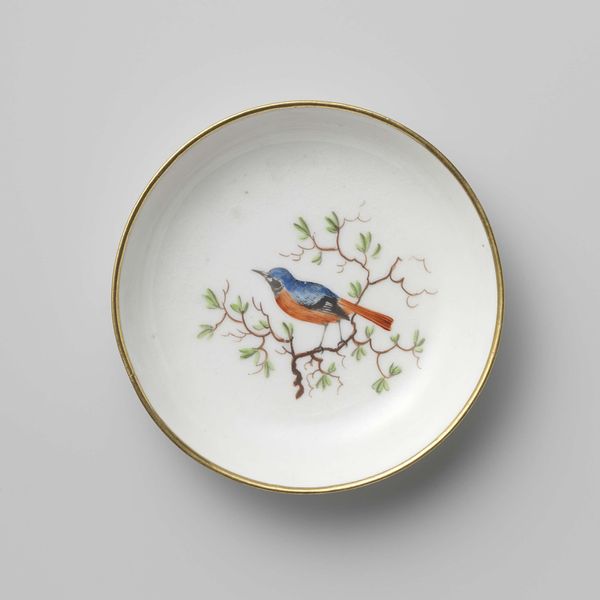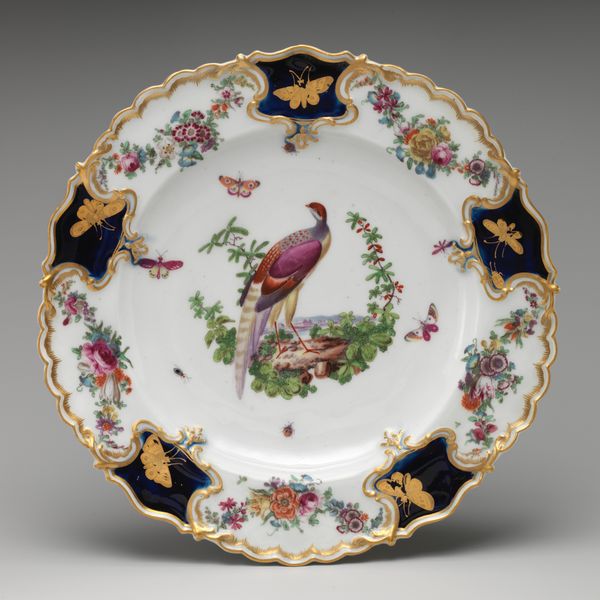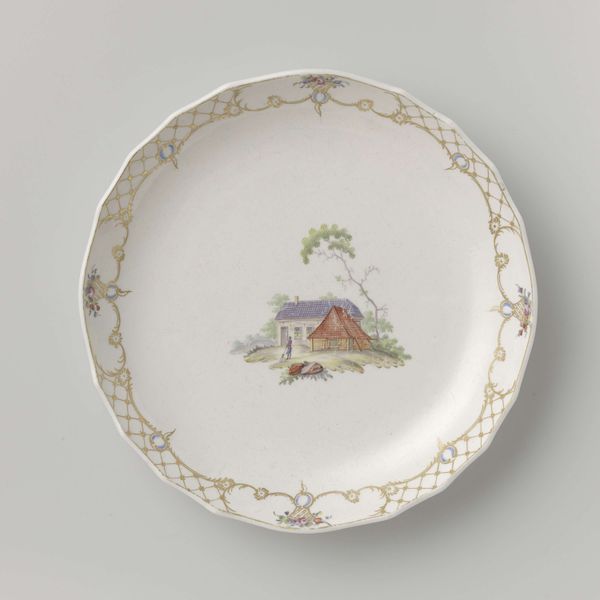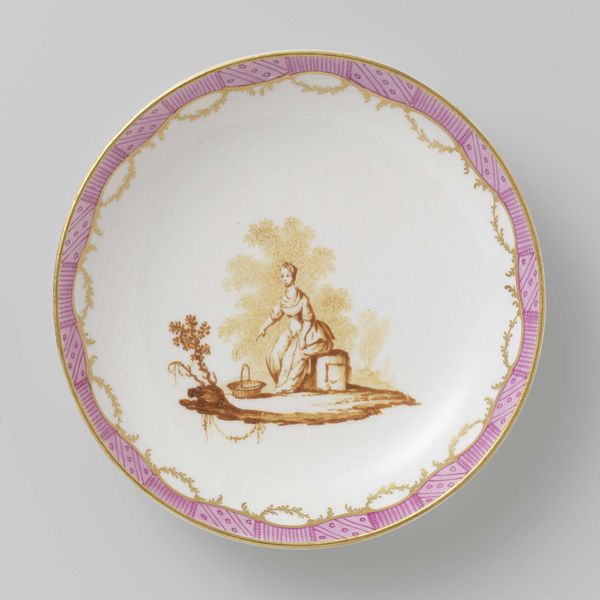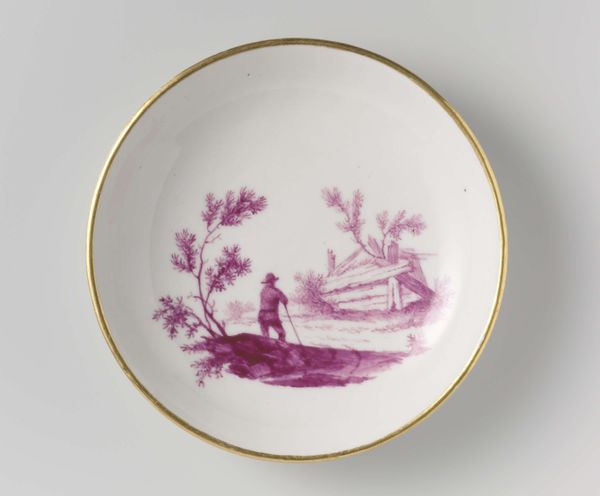
Dimensions: height 2.5 cm, diameter 12 cm
Copyright: Rijks Museum: Open Domain
This delicate saucer was made in Loosdrecht, a town near Amsterdam, at a pottery factory established in the mid-18th century. Porcelain production was often a form of aristocratic patronage and the Loosdrecht factory was initially supported by a local Lord. The appeal of porcelain lay in its associations with luxury, and its origins in far-off China. The Dutch East India company was the main importer of porcelain and other luxury goods from Asia in the 17th and 18th century. The decoration on this saucer is an example of chinoiserie, a European interpretation of Chinese motifs. The bird depicted here, along with the stylized landscape elements, are a fantasy vision of the East. Art historians can look to company records and other archives to better understand the role of institutions and trade in the production and dissemination of luxury goods like this saucer.
